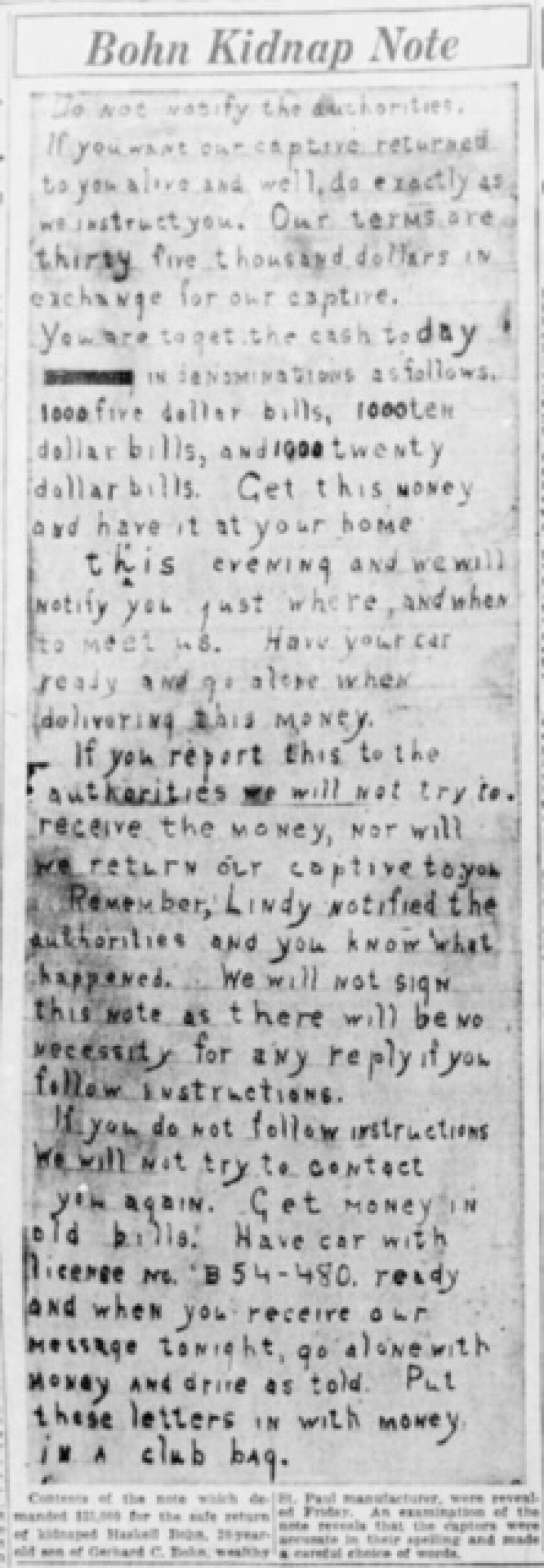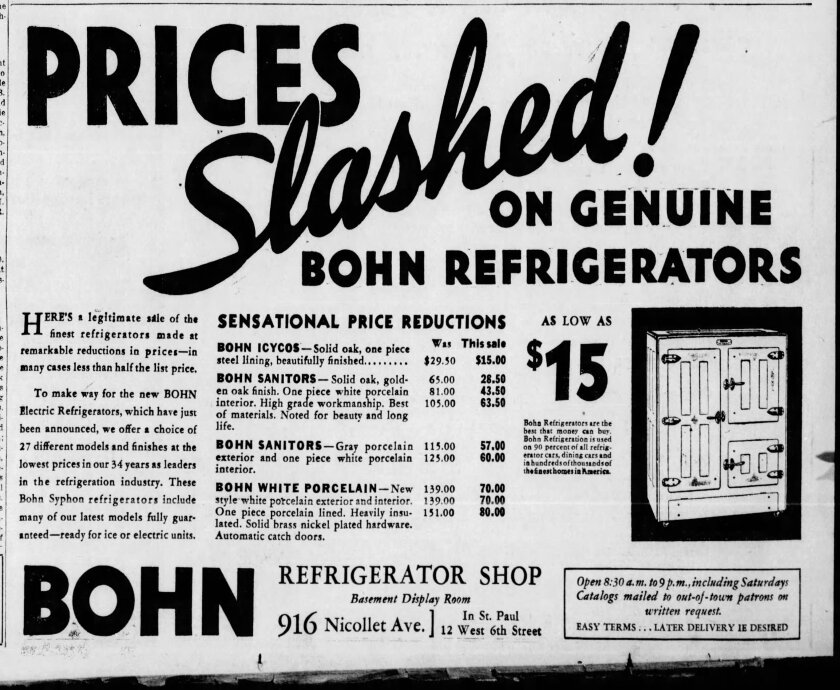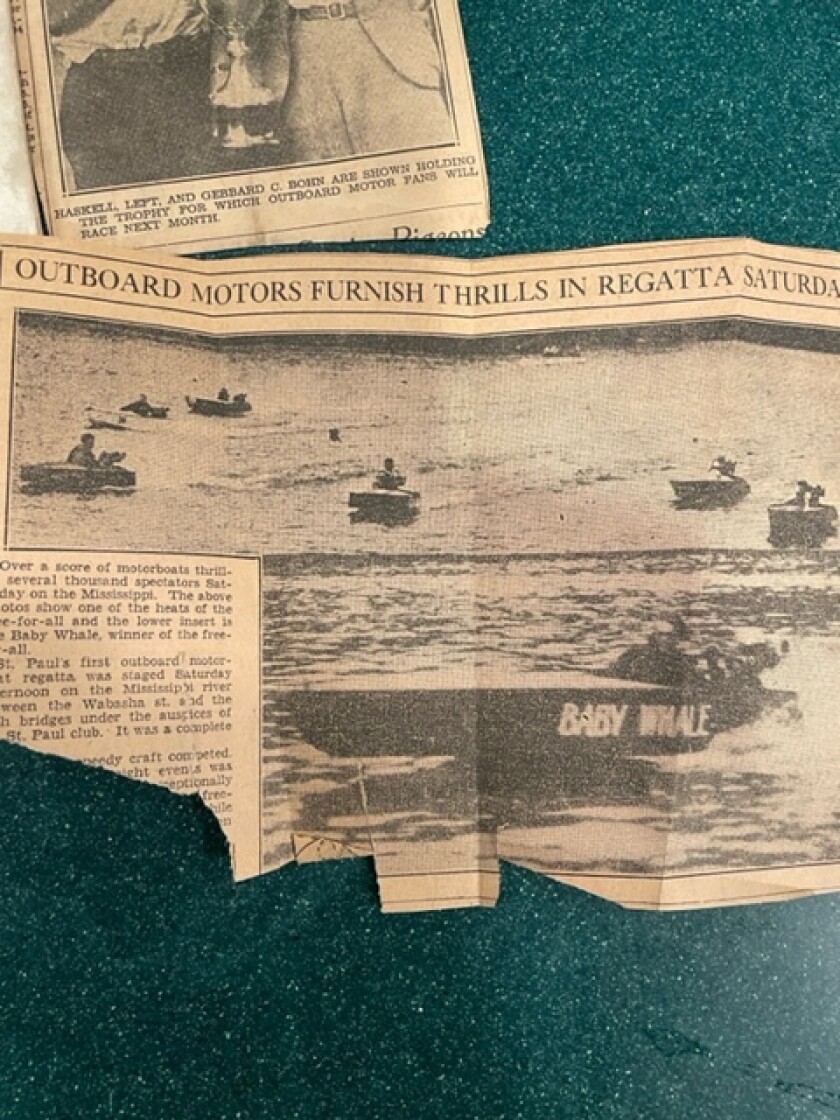Editor's note: This is part 1 in a 3-part series on the kidnapping of Haskell Bohn, son of Minnesota millionaire. Recently uncovered photos, video footage and police transcripts obtained by Forum News Service shed new light on this historical true crime story. Find part 2 here , and part 3 here.
At 20 years old, with wealth and good looks on his side, Haskell Bohn was living the high life.
ADVERTISEMENT
The son of Minnesota manufacturing millionaire, Haskell Bohn appeared to be a flashy guy. Yet, despite just graduating from St. Paul's prestigious Breck ��������, he was employed as a laborer at the Bohn Refrigerator factory, which his family owned.
Unfortunately for the Bohn family, Haskell Bohn's flash caught the attention of the Sankey Gang, a notorious criminal organization housed out of neighboring Minneapolis.
Verne Sankey and Gordon Alcorn honed in on the young man as he stepped out of his St. Paul home, headed for work at the factory on the morning of June 30, 1932.
As Haskell Bohn approached the home's garage, where his chauffeur was waiting, Sankey and Alcorn pounced, pointing a gun at the young man as they threw him in the back of a small sedan, according to a Star Tribune article from the time.
The chauffeur was threatened with an automatic rifle to the face. Before speeding off, the kidnappers tossed him a ransom note.
“Do not notify the authorities. If you want our captive returned to you alive and well, do exactly as we instruct you. Our terms are $35,000 in exchange for our captive,” the note read, in part.

Sankey and Alcorn sped off, taking the frightened and blindfolded 20-year-old to a dark basement in an undisclosed location, where he was held for six days.
ADVERTISEMENT
Haskell Bohn’s son, David, grew up hearing his dad tell stories that differed quite a bit from the typical tales a father hands down to a son.
"He (my dad) tried not to look at the kidnappers because he knew that would put him in danger," David Bohn said in a recent interview with Forum News Service, with whom he shared exclusive access to material about his family and his father's kidnapping.
His father's kidnapping has been a source of intrigue his whole life. Yet it was only recently that David Bohn began to dig into his family's past, uncovering details of the family business and the crime that targeted his father and gained nationwide attention.
Bohn fortune founded on refrigeration
The Bohn smokestack, painted with giant white lettering high above the Midway skyline, was a symbol of St. Paul in the early 1900s — and a sign to weary travelers that their journey home was coming to a close.
The smokestack represented a company known throughout the globe: Bohn Refrigeration. The clean, white refrigeration units, with state-of-the-art drip boxes that captured water from melting ice, had changed the domestic game. And, in the process, lifted its founder, Gebhard Bohn, to millionaire status.
For those throughout Minnesota, the Bohn name represented a sense of hometown — and state — pride. Yet by 1932, the Bohn name became famous for something far more sinister when it became the target of a Minneapolis-based criminal organization.
The story of Bohn Refrigeration is one of the American Dream.
ADVERTISEMENT
“His story really is incredible,” said David Bohn, of his great-grandfather, Gebhard.
Founded in 1903, the company emerged from an unlikely scenario. Gebhard Bohn arrived in the United States from Germany in 1872, settling first in the Winona, Minn. area. Having learned to write English in Germany, Gebhard Bohn spent his first few years in America learning to speak the language as well.
With an understanding of the written — and spoken — language, Gebhard Bohn boarded a train to St. Paul, with plans to stay with his brother and work on a lumber mill.
Down on his luck at the time, Gebhard Bohn stepped off the train in the capitol city with nothing — even his hat had been stolen along the ride. His luck, it seemed, had run out.
Eventually, after years of hard work, ingenuity, and maybe a little luck after all, Gebhard Bohn turned things around when he invented a refrigeration unit that eliminated food odor.
At the time, that was a big deal.
The proprietary air circulation system cut out unwanted smells by absorbing them into ice, which then melted into the unit’s drip pan.
ADVERTISEMENT

It was a hit, a game changer for families around the world.
The invention led to a refrigeration revolution, based in Minnesota. Its manufacturing unit continued to expand, employing hundreds in the area. In turn, the Bohn fortune also continued to grow — and people took notice.
The family lived within a wealthy neighborhood in St. Paul. The family's 6-bedroom, 6-bathroom home on the 1400 block of Summit Avenue was an impressive site.
The Bohn name also quickly became known within the boat racing scene, a popular activity among wealthy area families with the means to purchase impressive racing boats.

It wasn’t unusual for such races to draw crowds of spectators, often generating more than a thousand viewers eager to gawk at the extravagant boats and cheer on their favorite family names.
It was also an opportunity for criminals eyeing the wealthy to identify the who's who of high society.
While Gebhard Bohn passed away in 1924, his son, also named Gebhard, Haskell's father, took over the family business.
ADVERTISEMENT
Unfortunately for the Bohn family, just a few years later, they became the target of a gang of criminals known to make their money by carrying out kidnappings for ransom.
While it didn't show on the outside, the Bohn business was going through hard times when the gang targeted the family.
Not too long after the kidnapping, the Bohn Refrigerator factory closed. While not too much detail exists regarding the reason for the closure, a cross town rival did open its own factory, which is now known as Whirlpool.
In part 2 of this series, learn what the 40-page police transcript interview with Haskell Bohn, recently obtained by Forum News Service, reveals about his time in captivity.












